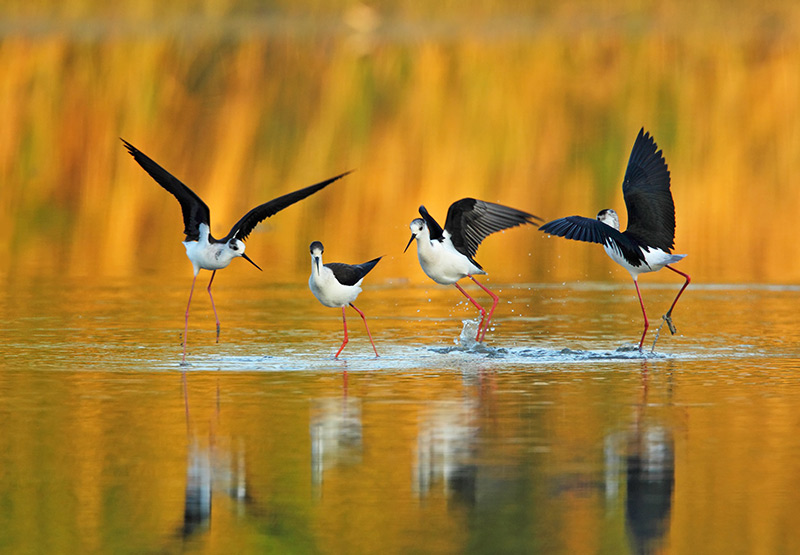Project results
A network of Volunteers
The objective of the Net pro Net project was to activate a network of volunteers that could contribute, in the long term, to monitoring and surveillance actions of the Natura 2000 sites and to the dissemination of knowledge of the Natura 2000 network among local communities. br />
The Life Net pro Net has in fact set up a network of Local Conservation Groups (GLC) which, through standardized methodologies, collect data for the assessment of the conservation status of some of the bird species of Community interest, included in Annex I of the Birds Directive, within some sites of the Natura 2000 network. These data are made available to the bodies that manage the Natura 2000 sites and ISPRA (Superior Institute for Environmental Protection and Research) so that they can be useful for the management of the sites. Natura 2000 same.
Furthermore, the continuous presence of local conservation groups in the territory contributes to the protection of Natura 2000 sites thanks to the timely reporting of possible problems to the managing bodies and to the authorities responsible for surveillance.
The project in numbers
La Piana di Gela al Congresso sulla Rete Natura 2000 a Milano.😊 #nuovavitaallarete #natura2000 #lipu #ambiente #natura #netpronet
Pubblicato da LIPU Niscemi su Lunedì 5 novembre 2018
- 18 Local Conservation Groups active in Italy
- 27 Natura 2000 sites monitored in 12 Italian regions
- 33 species of particularly protected birds monitored
- 209.869 hectares of land under the attention of volunteers
- 190 volunteers involved
- Over 1,600 people involved in organized events
- 41,000 postcards of Natura 2000 sites distributed
- 72 information panels showing the biodiversity of Natura 2000 sites posted
- 19 public bodies managing the sites involved
The species monitored
There are 33 species of birds monitored by volunteers, including some of the rarest and most threatened in our country, such as the Egyptian vulture, the Lanarius or the Cuckoo Hawk. Others also play an important role in everyone's imagination, such as the White Stork. For other, even less well-known, Italy is an important refuge: it is the case of some species of herons like the Nitticora or the Little Egret. << br />

These are all species included in Annex I of the Birds Directive, or deserving of particular attention from the point of view of conservation and whose protection has positive repercussions on the protection of the habitats in which they live and on the other species with which they cohabit. br />
The monitoring methodologies used, all recognized and shared by the scientific community, are different in relation to the different species and the different environmental contexts. The volunteers were able to implement on the field techniques such as the execution of transepts useful for counting species in open areas, such as the Little Averla or the Tottavilla, but also in more challenging contexts, such as the woods frequented by the Black Woodpecker or from the dwarf owl.
Many hours have been spent in research and observation from vantage points in search of birds of prey such as the Peregrine Falcon or the Bonelli's Eagle, as well as with a careful look we went in search of the mimetic Fratino on Sicilian beaches.
VOLUNTEERS
FOR NATURE
The #TEAMNATURA LIFE project was born with the aim of constructing a network of environmental volunteers that can help to protect and monitor the sites of the “Natura 2000 Network” (natural areas that are fundamental for the conservation of the European environment and which are therefore protected under EU Directive 92/43/CEE as “Habitats”) as well as disseminate knowledge of the “Natura 2000 Network” in Italy. A network of volunteers to assist in the active management of the “Natura 2000 Network”
Project targets
